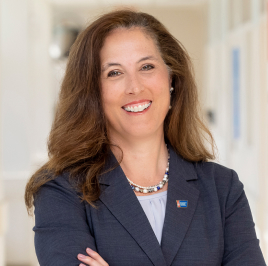This is an official site of the J.P. Morgan Healthcare Conference. Please note there are sites offering hotel rates and access to the conference that are not affiliated with J.P. Morgan. This event is by invitation only and invitations are not transferable. Contact your J.P. Morgan representative for more information.
The 43rd Annual Healthcare Conference will take place on January 13-16, 2025 in San Francisco, CA.
This premier conference is the largest and most informative health care investment symposium in the industry which connects global industry leaders, emerging fast-growth companies, innovative technology creators and members of the investment community.
Coming soon
The speaker line-up for the conference
Coming soon: The speaker line-up for the conference
Insights
The major themes in healthcare for 2025
Chris Schott: As I think about major themes for 2025, M&A really is one of the areas we're going to be paying attention to. We've got balance sheets across the sector in a much better place than they've been. We're seeing the biotech sector, continue to produce innovative medicines that quite honestly can be maximized in the hands of a larger partner or being acquired.
Chris Schott: Another factor driving M&A is really the sector's 2028 and 2029 patent cliff. So we think that that's going to be a motivating factor for the sector.
Chris Schott: When I think about research and development, obesity remains very much top of mind. This is the largest category the industry has ever seen. We're estimating sales approaching $150b by the end of the decade and peak sales that are closer to $200b. We're also expecting data for the first oral GLP one, and something that really unlock the capacity constraints that have impacted the market.
Chris Schott: We continue to see innovation is really a guiding principle for the sector. We've got all these new tools being employed to develop better differentiated drugs. We really don't see that slowing in any meaningful way over the next few years. I think everyone agrees having better, more effective medicines is in every individual, every country, every organization's best interest.
[End of video]
Jess Fye: One major theme we're watching in biotech for 2025 is new drug launches. Innovation is the biggest one for this group every year. I think there's going to be a lot to watch in biotech.
Jess Fye: What we hear from investors on what could attract the most strategic interest in 2025, the hot therapeutic areas are I&I, which is inflammation and immunology, oncology and then cardio renal metabolic.
Jess Fye: They can have decent sized patient population ends as well as pretty healthy pricing. I think the reason folks are attracted to those areas is because the combination of those two can lead to large markets.
Jess Fye: In terms of M&A in biotech in 2024, we saw fewer deals and much lower dollar volume of deals. Thinking about 2025, about half of investors expect that to increase. if I step back, the theme for us is selectivity. We still see innovation running strong in the group. We're expecting solid performance on clinical data readouts as well as drug launches. The reason we think you should be selective is because there is this uncertainty and volatility that's been introduced, and that's going to affect how some of these stocks perform.
[End of video]
Innovation and resilience: Key themes shaping not-for-profit healthcare
How are health systems navigating evolving challenges in the not-for-profit healthcare sector? Find out.











